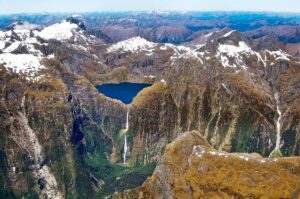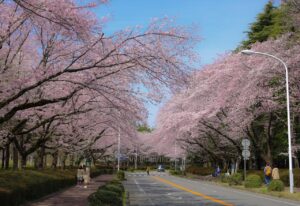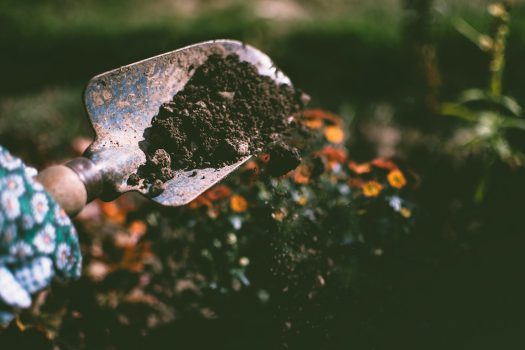 Pin
Pin Table of Contents
What is Soil? Exactly!!
There is a thin fragile layer lying on a small part of the surface of the Earth. Few people think much of it or understand it. Yet this layer — the soil — is perhaps the greatest gift of Nature to Man. It is a complex living thing without which there is nothing but desert.
The soil beneath your feet keeps you and supports you. It is soil that enables plants to grow; and it is plants that ultimately feed you.
But why is soil essential to plants? What is it about the dust upon the ground that makes crops flourish — or die?
The short answer is that soil is not essential to plants. They can grow quite happily without it. In fact, in one form of horticulture — hydroponics — soil is not used at all. Instead of growing plants in soil, the horticulturalist himself supplies a careful balance of water, air and nutrients to the plants’ roots.
But hydroponics is an exceptional way of growing crops. To achieve the right balance of air, nutrients and water requires a great deal of care — and expense — from the horticulturalist.
A good soil will naturally provide this balance.
Moreover, soil gives plants something in which they can anchor themselves. Without this anchorage, all but the smallest plants would simply blow away in the wind.
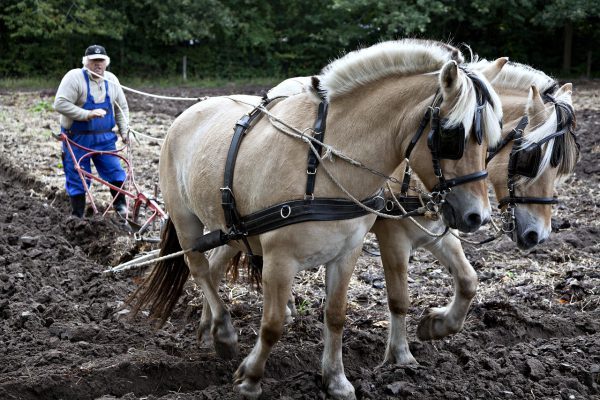 Pin
Pin  Pin
Pin Nowadays Man has a greater ability to modify the soil than ever before. Tractors, for instance, are more powerful than even the biggest horses.
Soil provides a balanced medium in which living plants can grow because it is itself a balanced living thing. It is made from the complex interaction of rock, water, air, plants, animals, fungi and bacteria. The-soil is usually only about 25 centimetres thick, but it is a complete living world.
The beginning of any soil is rock. The action of water and air breaks the rock down into fine particles. These fine particles are the basis of the soil.
Coarse particles — between 0.5 and 2 mm in diameter — are called sand. Fine particles — less than 0.002 mm in diameter —are called clay. In-between-sized particles are called silt. It is the different amounts of sand, clay and silt that largely determine the characteristics of a soil.
Soils with a lot of clay tend to become easily waterlogged and difficult and ‘heavy’ to work. Plant roots need air to grow just like people do, and can drown in a soil if there is no air in it. In addition, clay particles often stick together into big lumps or ‘clods’ into which neither air nor plant roots can penetrate.
A first-class soil contains between 10 and 20 per cent clay and is called a loam. It is well-drained, easy to work, and fertile.
But there is more to soil than rock particles. There is also a biological part. This is the part made up of living — or once-living — things: plants, animals, fungi and bacteria.
The once-living part is called humus. If some soil is mixed with water and shaken in a flask, and then allowed to settle again, the coarse sand settles first, then the silt, and finally the clay. Left floating on the water surface is a black, sticky substance. This is humus. It is composed of the dead remains of plants and animals.
Whether a soil is poor because it is too clayey, or too sandy, whether it lacks important plant nutrients, or is too well-drained or poorly drained, humus makes it better.
The sticky black substance attaches itself to the surface of the soil particles. It sticks together clay particles which are too small to make good soil, thereby making bigger particles. It attracts water and chemical nutrients making too-dry sandy soils moist, thus preventing nutrients being washed away by rain. It also slowly and continually breaks down itself, partly chemically and partly by the action of fungi and bacteria, releasing nutrients into the soil.
So one of the best ways of improving a soil — and so growing more crops — is to add humus. But you can’t buy humus in the shops. Humus is part of the soil and the only way you can obtain it is from soil. It’s not very often a farmer sells his soil!
However, you can increase the amount of humus by adding manure or garden compost. Both of these are basically rotted plant and animal remains. If they are added to the soil, fungi and bacteria turn them into humus.
There are other ways of improving the soil, too. One of the most important is ploughing. This is particularly important on clay soils. What the farmer does is dig large chunks of soil up from under the surface and leave them lying on the top. During the winter, the frost and rain break these lumps up into smaller pieces more suitable for plant growth.
A farmer can also add lime if a soil is too acid to grow healthy plants — as it often is on sandy soils. And, of course, he can add chemical fertilizers to increase a soil’s fertility — although, unlike adding manure, this does not improve the soil’s physical structure.
It is important that a farmer does look after his soil by doing some or all of these things. Every time a crop is harvested, the nutrients that make up that crop are removed from the soil for good. (On uncropped land, such as the Amazon Jungle, plants die and rot where they stand, and so their nutrients are returned to the soil). If a soil is to keep producing crops, thereby continuing to support Man, nutrients must be given back to replace those that are harvested.
If they are not, the fertility of the soil is slowly, and inevitably reduced. In the end, fertile soil can become barren dust.
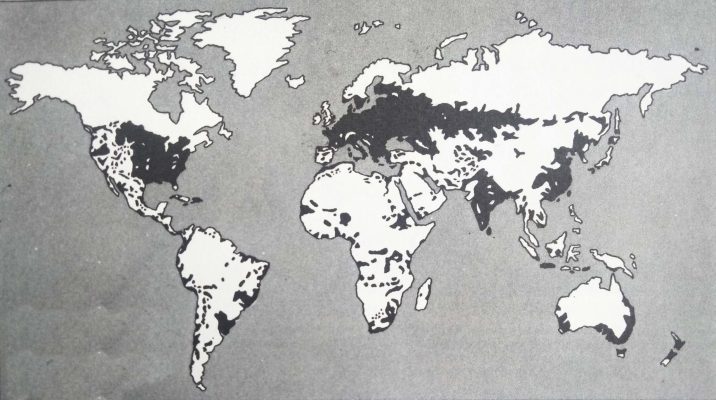 Pin
Pin See Above: A mere 8% of the Earth’s land surface is covered in soil good enough to grow crops (black on map). The rest is desert, forest, grassland or mountains.
Just eight per cent of the Earth’s surface is capable of growing crops. This eight per cent is the main support of the 4,470 million people on the Earth — which means there is about one fifth of a hectare each. Spread thinly over this fifth of a hectare is some 700 tonnes of soil. That 700 , tonnes isn’t just dirt. It is each person’s life-support layer.
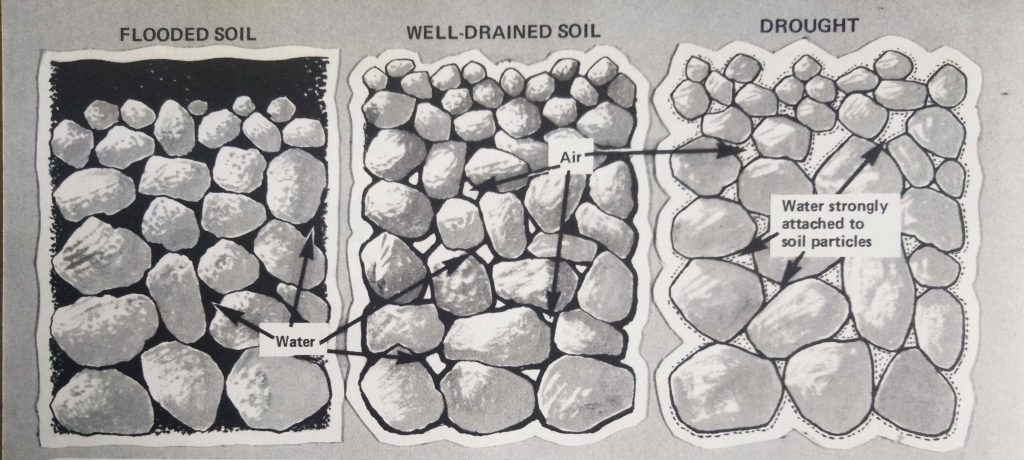 Pin
Pin Plants only flourish in soil containing both air and water trapped in the spaces between soil particles. In flooded soil, all the spaces are full of water, and without air, the roots ‘drown’. In a drought, there is still some water in the soil, but it is so strongly attached to the soil particles that roots are unable to absorb it. Plants die of lack of water.
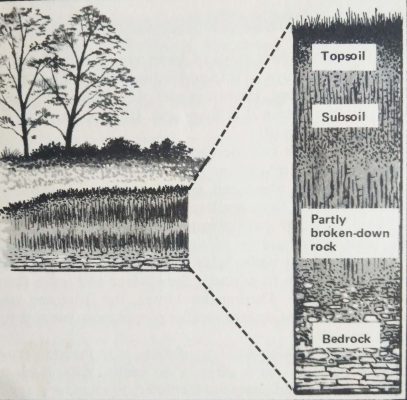 Pin
Pin If you could cut into the soil like a cake, you would see several different layers. The top layer is the fertile topsoil. Beneath this is the subsoil, which contains less plant and animal material; and beneath that is partly broken-down rock and then bedrock.
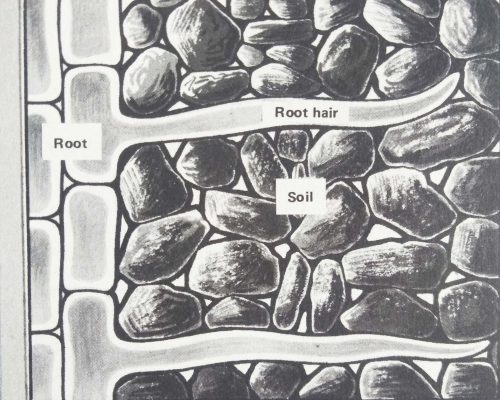 Pin
Pin Compared with the size of soil particles, roots are huge. But to be effective at obtaining water and nutrients, they must grow into the spaces between the particles. Accordingly, they are covered in tiny ‘hairs’ which mingle among the grains of soil.
 Pin
Pin Soil is made up of three types of particle — sand, silt and clay. Different names are given to soils depending on how much of each type they contain. The best soils contain little clay and are called loams. In the triangle, each corner represents 100% of either clay, silt or sand. The amount steadily decreases as you move towards the opposite side.
Theory of Soil
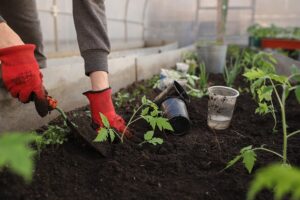 Pin
Pin Soil is a mixture of minerals, organic matter, gases, liquids, and countless organisms that form the outermost layer of the Earth’s surface. It is a complex and dynamic natural resource that plays a vital role in supporting life on our planet.
Minerals, which are derived from rocks, make up a significant portion of soil composition. These minerals provide nutrients essential for plant growth, such as nitrogen, phosphorus, potassium, and calcium. The type and abundance of minerals in the soil determine its fertility and impact the types of plants that can grow in a particular area. For example, sandy soils have larger particles and drain quickly, making them less fertile than clay soils with smaller particles that hold moisture more effectively.
Organic matter, such as decaying plant and animal materials, is another crucial component of soil. It contributes to soil fertility by increasing its water-holding capacity, cation exchange capacity (ability to retain and exchange nutrients), and overall structure. Organic matter also serves as a food source for soil microorganisms, which helps maintain a healthy ecosystem and nutrient cycling within the soil. Moreover, the decomposition of organic matter releases nutrients back into the soil, ensuring their availability to plants.
Gases, including oxygen and carbon dioxide, exist in the soil’s pores and interstitial spaces. These gases are vital for the survival of soil organisms, as well as for root respiration and nutrient uptake by plants. Oxygen availability in the soil is particularly crucial for plant roots, as they require it for metabolic processes. Conversely, excessive levels of carbon dioxide may hinder root growth and other soil functions.
Liquid presence in the soil is primarily water. Water is essential for plant growth as it provides the medium for nutrient uptake and acts as a solvent for various chemical reactions in the soil. It also helps maintain soil structure and stability. The movement and availability of water in the soil are influenced by factors like texture, pore size, and compaction.
Soil is teeming with life, ranging from bacteria, fungi, and algae, to earthworms, ants, and larger burrowing animals. These organisms are collectively known as soil fauna and flora. They play integral roles in soil formation, nutrient cycling, disease suppression, and organic matter decomposition. For instance, soil bacteria convert atmospheric nitrogen into a usable form for plants through a process called nitrogen fixation, thereby enriching the soil with this vital nutrient.
Soil properties can vary greatly across different regions and ecosystems. Various factors influence soil formation, such as climate, parent material (the rock or sediment from which the soil originates), topography, and time. These factors influence the physical, chemical, and biological characteristics of soil, resulting in a wide range of soil types and classifications.
In conclusion, soil is a complex, living, and interconnected system that supports plant growth, filters and regulates water, and plays a crucial role in Earth’s ecosystem. The composition and properties of soil are influenced by a variety of factors, and its sustainable management and conservation are essential for agriculture, forestry, and environmental purposes.
Soil is typically divided into different layers or horizons, each with its own characteristics and role in soil fertility and health. The main layers of soil, known as soil horizons, are as follows:
-
O Horizon (Organic Layer)
This layer consists of decomposed organic matter like fallen leaves, twigs, and dead plants. It provides essential nutrients, improves soil structure, retains moisture, and promotes microbial activity, thus enhancing soil fertility and overall health.
-
A Horizon (Topsoil)
This is the uppermost layer of mineral soil and is often referred to as topsoil. It contains a mixture of organic matter, mineral particles, and microorganisms. The A horizon is crucial for plant growth as it holds most of the plant nutrients and provides a favorable environment for root development. It also contributes to water retention and nutrient availability.
-
E Horizon (Eluviation Layer)
The E horizon is prevalent in some soils and is characterized by the loss of minerals, particularly clay, iron, and aluminum. This layer results from the leaching process, where water percolates through the soil and carries dissolved nutrients downward. Its presence or absence depends on the specific soil type. For example, in more weathered soils, the E horizon is often noticeable.
-
B Horizon (Subsoil)
The B horizon is commonly referred to as subsoil and is located beneath the topsoil. It consists of a mixture of mineral particles, clay, and some organic matter that has leached down from the topsoil. The B horizon acts as a nutrient reservoir, holding essential elements that can be gradually released to the A horizon. It also contributes to the soil’s structural stability due to the presence of clay and minerals.
-
C Horizon (Parent Material)
The C horizon is composed of weathered rocks, minerals, or unconsolidated material. It serves as the parent material from which the upper soil horizons develop. The C horizon does not typically contribute to soil fertility directly, but it can indirectly influence it through its mineral composition and stability.
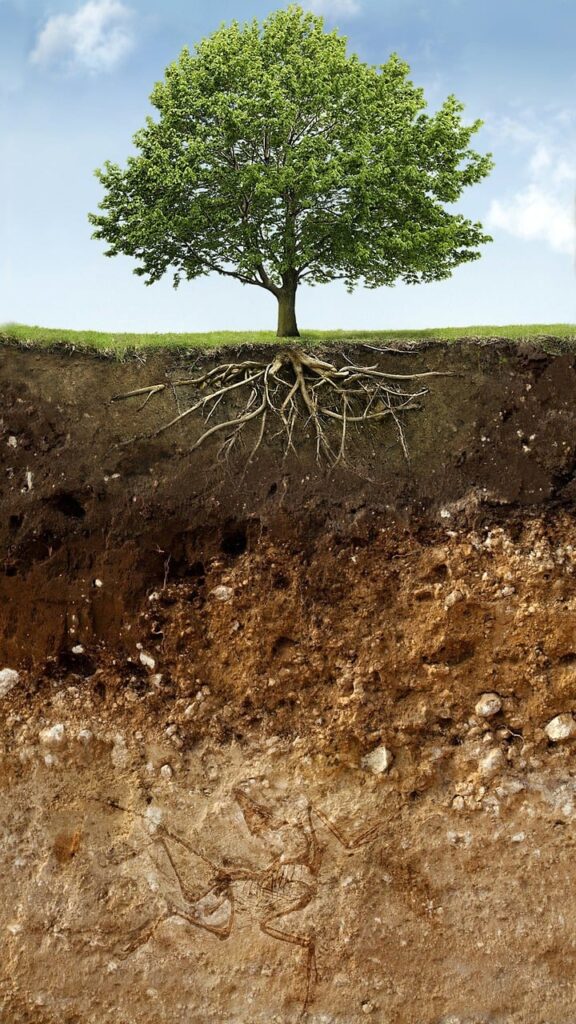 Pin
Pin  Pin
Pin Each layer of soil contributes to overall soil fertility and health in different ways. The organic layer (O horizon) provides nutrients and improves soil structure, fostering microbial activity. The topsoil (A horizon) contains organic matter and nutrients necessary for plant growth. The subsoil (B horizon) acts as a nutrient reservoir and contributes to overall soil structure and stability. The parent material (C horizon) influences the mineral composition and stability, thus indirectly affecting fertility. A healthy balance and interaction between these layers are vital for sustaining plant growth, nutrient availability, water retention, and overall soil health.
Soil composition and pH level have significant impacts on plant growth and agricultural productivity. Here are some ways:
- 1. Nutrient availability: The composition of soil determines the availability of essential nutrients for plant growth. Different plants have varying nutrient requirements, and the soil composition needs to supply these nutrients. For example, nitrogen, phosphorus, and potassium are crucial for plant growth, and their availability in the soil affects the productivity. If the soil lacks these nutrients, plant growth may be stunted, leading to reduced agricultural productivity.
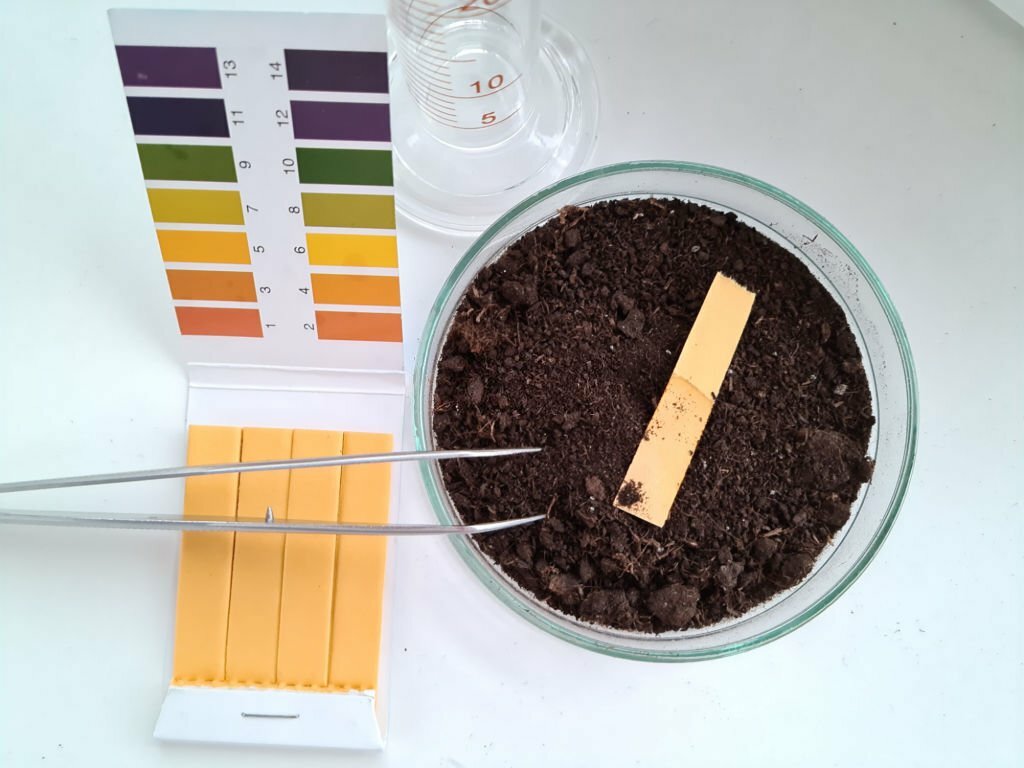 Pin
Pin - 2. Soil structure and water retention: Soil composition affects its physical properties and structure, which in turn influence water retention. A well-structured soil with good water-holding capacity helps to provide moisture to plants and prevents water runoff. This promotes optimal plant growth and productivity. On the other hand, soil with poor structure and low water retention capacity can lead to water stress, negatively impacting plant growth.
 Pin
Pin - 3. pH level and nutrient availability: Soil pH is a measure of its acidity or alkalinity. Different plants have different pH requirements for optimal growth. Soil pH affects the availability of essential nutrients to plants. For instance, at extreme pH levels, certain nutrients may become immobile or even toxic to plants. By adjusting the pH to the correct range, farmers can improve nutrient availability and uptake, thereby enhancing plant growth and productivity.
- 4. Microbial activity: Soil composition and pH influence microbial activity, including the presence and functionality of beneficial soil microorganisms. Beneficial microorganisms, such as nitrogen-fixing bacteria, mycorrhizal fungi, and decomposers, play essential roles in nutrient cycling and availability to plants. The composition and pH of the soil can affect the microbial community, potentially impacting plant growth and agricultural productivity.
- 5. Disease and pest resistance: Soil composition and pH can also impact the vulnerability of plants to diseases and pests. Imbalanced soil composition or improper pH levels can make plants more susceptible to pathogens and pests, reducing their growth and productivity. Maintaining a healthy soil composition and optimizing pH levels can help enhance disease and pest resistance, thereby improving agricultural productivity.
Overall, soil composition and pH level are crucial factors that influence plant growth and agricultural productivity by affecting nutrient availability, water retention, microbial activity, disease/pest resistance, and overall plant health.
The key components of soil are:
- 1. Minerals: These are derived from the parent material and include sand, silt, and clay, which determine the soil texture. The proportions of these particles affect the soil structure and water holding capacity.
- 2. Organic matter: Decomposed plant and animal material, including humus, provide essential nutrients, improve soil structure, increase water and nutrient holding capacity, promote beneficial microbial activity, and enhance plant growth.
- 3. Air: Soil needs adequate airspace to ensure oxygen availability for root respiration and microbial activity.
- 4. Water: Soil needs to retain and supply water for plant uptake. Soil moisture content affects nutrient availability, root growth, and overall plant health.
- 5. Microorganisms: Soil hosts bacteria, fungi, protozoa, and other microscopic organisms that decompose organic matter, aid nutrient cycling, and protect plants against diseases.
- 6. Fauna: Soil organisms like earthworms, nematodes, arthropods, and insects contribute to nutrient cycling, soil aeration, and degradation of organic matter.
These components influence soil fertility and plant growth in several ways:
- 1. Soil texture: Soil texture affects its ability to hold water and nutrients. Sandy soils drain quickly and have poor water and nutrient retention. Clayey soils hold more water and nutrients but may suffer from poor drainage. Loamy soils strike a balance between the two.
- 2. Organic matter: Organic matter enriches the soil with essential nutrients, improving fertility. It enhances soil structure by improving aggregation, allowing for better root penetration and water infiltration.
- 3. Soil pH: The acidity or alkalinity of the soil affects nutrient availability. Some plants have specific pH requirements for optimal growth. Lime or sulfur can be added to adjust soil pH.
- 4. Nutrient availability: Minerals in the soil provide macronutrients (nitrogen, phosphorus, potassium) and micronutrients (iron, manganese, zinc) necessary for plant growth. Their availability is influenced by soil pH, organic matter, and microbial activity.
- 5. Soil structure: Good soil structure promotes root development and allows for air and water movement. Well-structured soil ensures adequate oxygen supply and water drainage for root respiration.
- 6. Microorganisms: Beneficial soil microorganisms break down organic matter, releasing nutrients for plant uptake. They also protect plants from harmful pathogens, improving plant health and growth.
- 7. Soil compaction: Compacted soil restricts root growth and reduces oxygen availability. It also hampers water infiltration and promotes runoff, limiting plant access to water and nutrients.
Understanding these key components and properties of soil helps farmers and gardeners manage and optimize soil fertility for healthy plant growth.
Soil erosion occurs when the top layer of soil is removed or washed away by wind, water, or other external forces. It typically happens due to natural processes like rainfall, runoff, wind, or the movement of ice and glaciers. However, human activities, such as agriculture, deforestation, overgrazing, and construction, can accelerate soil erosion.
The impacts of soil erosion on ecosystems and human activities are significant. Here are some key consequences:
1. Loss of fertile soil: Erosion removes the nutrient-rich topsoil, which is vital for plant growth. This reduces soil fertility, making it more challenging for plants to thrive and lowering agricultural productivity.
2. Reduced water quality: Sediments eroded from soil can end up in nearby water bodies, causing water pollution. Excess sedimentation can harm aquatic life by reducing oxygen levels and inhibiting sunlight penetration.
3. Increased flooding and droughts: Eroded soil can clog waterways, leading to increased flood risks. Moreover, eroded soil has lower water-holding capacity, which contributes to quicker runoff and increased vulnerability to droughts.
4. Habitat destruction: Soil erosion can lead to the loss of habitat for various plant and animal species. This can disrupt ecosystems, leading to a decline in biodiversity.
5. Economic implications: Soil erosion affects agriculture, as it reduces crop yields and leads to increased expenses for soil conservation measures. It also impacts industries like construction and mining, where eroded soil can fill up reservoirs or damage infrastructure.
To prevent or mitigate the negative effects of soil erosion, several measures can be adopted:
- 1. Plant vegetation: Planting trees, grasses, and cover crops can help stabilize the soil and reduce erosion by providing root systems that hold the soil in place.
- 2. Contour plowing and terracing: Agriculture practices like contour plowing, where crops are planted along the contour lines, and terracing, which involves creating level steps on slopes, help slow down water runoff and promote water infiltration.
- 3. Conservation tillage: Adopting techniques like no-till or reduced tillage minimizes the disturbance of the soil, maintaining its structure and reducing erosion.
- 4. Implementing erosion control structures: Structures like retaining walls, sediment barriers, and grassed waterways can be built to slow down water movement, trap sediment, and prevent erosion in vulnerable areas.
- 5. Soil conservation practices: Practices such as crop rotation, proper irrigation management, and maintaining buffer strips along water bodies can reduce soil erosion and conserve soil moisture.
- 6. Sustainable land management: Promoting sustainable land management practices like reforestation, afforestation, and implementing erosion control plans in construction and mining activities can help mitigate soil erosion.
By implementing a combination of these measures, soil erosion can be minimized, protecting ecosystems, sustaining agriculture, and reducing the negative impacts on human activities.
Soil can be restored and improved through sustainable farming practices such as crop rotation, cover cropping, and organic fertilization. These practices have several potential benefits for soil health and the environment, but they also come with challenges that can vary depending on the region.
Crop rotation involves growing different crops in sequential seasons or years on the same piece of land. This practice helps prevent the buildup of pests, diseases, and weeds specific to one crop. It also promotes the improvement of soil structure and fertility by diversifying the nutrient demands of different crops and their root systems. Additionally, certain crops, like legumes, can fix atmospheric nitrogen in the soil, reducing the need for synthetic fertilizers. However, the success of crop rotation depends on selecting appropriate crop combinations and managing crop residues effectively.
Cover cropping involves planting non-commercial crops during periods when the main crops are not growing. These cover crops help protect the soil from erosion, improve soil organic matter content, suppress weed growth, and contribute nutrients and biomass upon decomposition. However, cover cropping needs careful selection of species that are suitable for the region and climate, as well as effective termination methods to prevent competition with cash crops.
Organic fertilization involves using compost, manure, or other natural sources to provide nutrients to crops. This practice improves soil fertility and structure over time. Organic fertilizers release nutrients slowly, reducing the risk of nutrient loss through leaching and volatilization. However, challenges include finding adequate and reliable sources of organic fertilizer, managing application rates to prevent nutrient imbalances, and addressing potential pathogen contamination from manure.
The benefits and challenges of these practices can vary in different regions due to factors such as climate, soil type, local regulations, and infrastructure. For example, in regions with dry climates, cover cropping may require careful selection of drought-tolerant species. In areas with limited access to organic fertilizers, sourcing and affordability may pose challenges.
Additionally, the adoption of sustainable farming practices can require changes in traditional farming systems and may involve higher initial costs or labor requirements. Overall, successful implementation depends on understanding the specific needs and conditions of each region and adapting the practices accordingly.
Frequently Asked Questions "The Soil" :
Soil is the thin layer of material on the Earth’s surface that provides a medium for plant growth. It consists of minerals, organic matter, water, air, and living organisms.
Soil is formed through a process called weathering, which involves the physical, chemical, and biological breakdown of rocks and minerals over time. This process is influenced by factors such as climate, vegetation, topography, and time.
Soil is composed of mineral particles, organic matter, water, and air. The mineral particles, such as sand, silt, and clay, contribute to the texture of the soil. Organic matter is made up of decomposed plant and animal material, providing nutrients for plants and improving soil structure. Water and air fill the spaces between soil particles, essential for plant roots and soil organisms.
Soil is essential for sustaining life on Earth. It supports plant growth by providing nutrients, water, and a stable root system. It filters and purifies water, helps retain rainwater, and regulates the water cycle. Soil also acts as a habitat for many organisms and plays a crucial role in maintaining biodiversity.
Soil fertility can be improved through various practices, such as adding organic matter (compost, manure), using cover crops, practicing crop rotation, and applying fertilizers based on soil test results. These practices help replenish nutrients, enhance soil structure, increase water-holding capacity, and promote the activity of beneficial soil organisms.
Several factors influence soil fertility, including the presence and availability of essential nutrients, pH level, organic matter content, soil texture, drainage, aeration, and the level of soil compaction. Climate and weather conditions also play a role in soil fertility.
Soil erosion can be prevented through various measures, such as planting vegetation cover, implementing terracing or contour plowing techniques, using mulch, constructing windbreaks or retaining walls, and avoiding overgrazing or inappropriate land use practices. These methods help stabilize the soil and reduce the impact of water or wind erosion.
Yes, soil can be contaminated by various substances, including heavy metals, pesticides, industrial waste, and sewage. Contaminated soil poses a threat to human health and can negatively affect plant growth and the environment. Remediation techniques, such as soil testing, phytoremediation, and soil washing, may be employed to clean up contaminated soil.
Soil health can be assessed through various indicators, including soil texture, pH level, nutrient content, organic matter content, water-holding capacity, infiltration rate, and the presence of soil organisms. Soil testing and analysis can provide valuable information about its fertility, structure, and overall health.
To protect and care for soil, you can practice sustainable agriculture and gardening techniques, such as avoiding overuse of synthetic fertilizers and chemical pesticides, minimizing soil disturbance, implementing proper irrigation methods, maintaining balanced nutrient levels based on soil testing, practicing crop rotation, and adopting conservation practices that promote soil health, such as cover cropping and mulching.





















